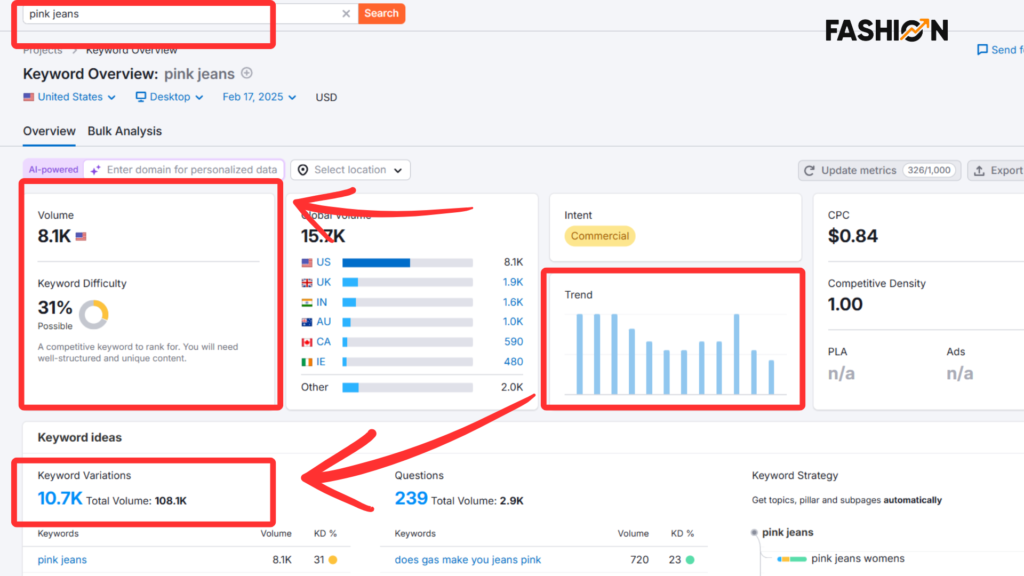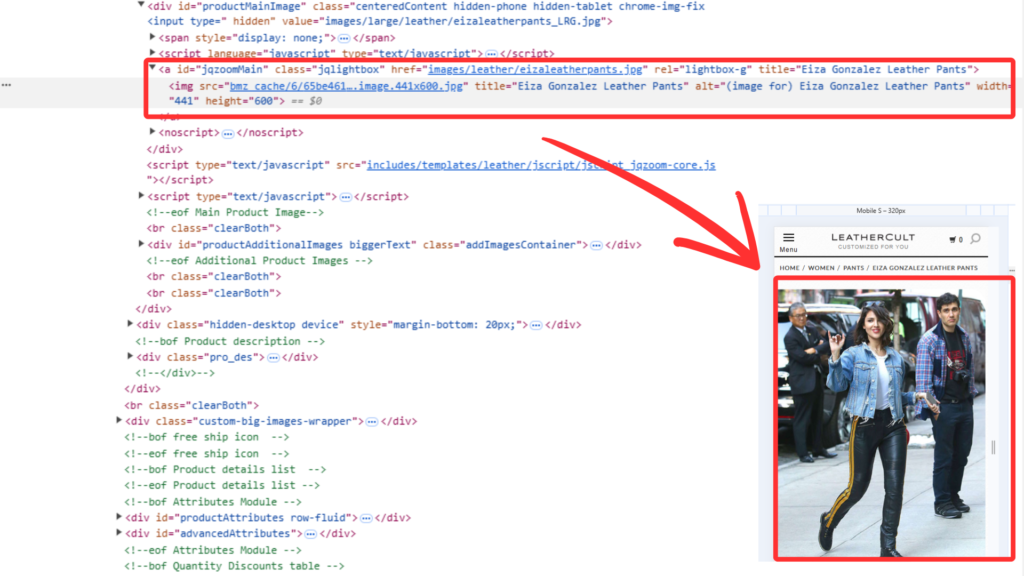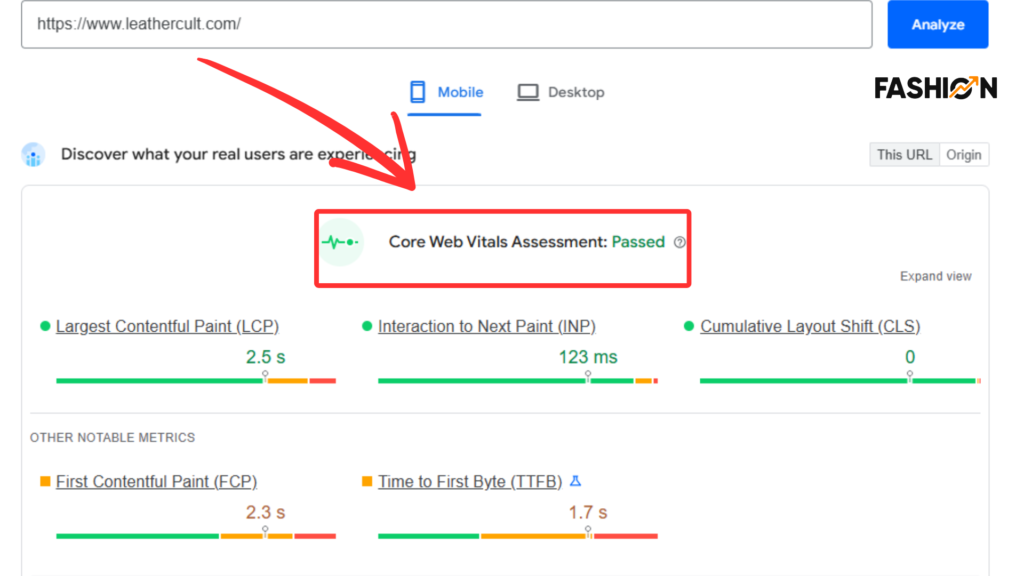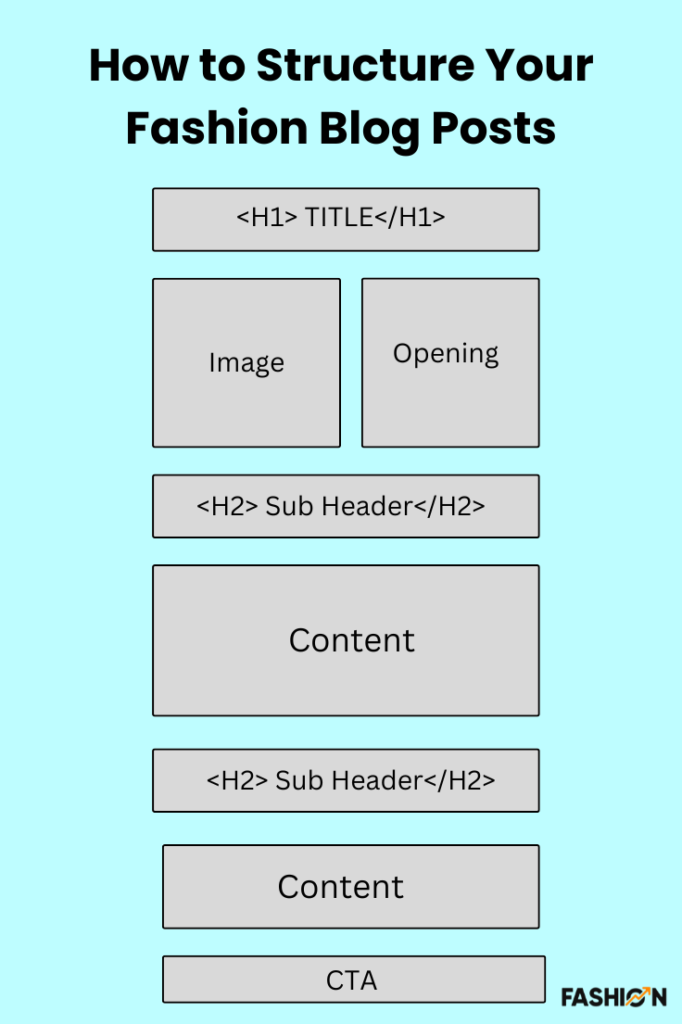Adapt the New Fashion E-Commerce SEO Trends in 2025 Or Fall Behind
The global fashion e-commerce industry is projected to hit $1.2 trillion by 2025. Over 53% of online fashion sales come from organic search (Statista, 2024). 68% of all online shopping experiences begin with a search engine (Forrester).
That means more than half of your potential revenue depends on whether your store ranks on Google.
But ranking isn’t as simple as it used to be. AI-driven search, real-time trend indexing, and evolving user intent are redefining how fashion shoppers discover products. Traditional SEO tactics won’t cut it.
This guide breaks down what’s changed in 2025 and how to optimize your fashion e-commerce site for maximum visibility, sales, and long-term success.
Take notes and implement. Here we go.
Keyword Research for Fashion E-Commerce in 2025

Keyword research in fashion e-commerce requires real-time tracking, AI optimization, and a mix of stable and trend-based keywords. Search behavior is shifting, and Google’s AI-driven search (SGE) and social commerce trends demand a new approach.
Here’s how to build a high-performing keyword strategy for your fashion store.
- Use AI-Powered Tools to Track Fashion Trends
Fashion trends shift weekly or even daily. Traditional keyword research isn’t enough. Use AI-driven tools that update in real time:
Google Trends: Track fashion keyword spikes by season and region.
Pinterest Trends & TikTok Creative Center: Identify viral products before they peak.
Exploding Topics & Trendalytics: Spot rising fashion terms before they hit mainstream.
Semrush & Ahrefs: Analyze search volume and keyword difficulty for product and category pages.
Pro Tip: Set alerts for trending fashion terms using Google Trends and Pinterest Predicts. Update product descriptions and blog posts accordingly.
- Balance Trend-Based and Evergreen Keywords
Fashion e-commerce must optimize for both:
Trend-based keywords: High-traffic but short-lived (e.g., “Barbiecore pink dress” in 2025).
Evergreen keywords: Consistent search demand year-round (e.g., “best black ankle boots for winter”).
Pro Tip: Use 50% evergreen, 30% trend-based, and 20% product-specific keywords across your product and category pages.
- Optimize for AI-Driven Generative Search Queries
Google’s Search Generative Experience (SGE) shows AI-generated results before traditional search listings. To rank, fashion e-commerce brands must optimize for:
Conversational queries: For instance “What’s the best breathable fabric for summer dresses?”
Comparisons: “Linen vs. cotton for hot weather?”
How-to queries: “How to style wide-leg jeans with boots?”
Pro Tip: Add FAQs and expert-style answers to product pages and blog posts to increase chances of being featured in AI-generated answers.
- Focus on Long-Tail and Visual Search Keywords
Shoppers search with more detail and use image-based search tools like Google Lens.
Long-tail keywords: “women’s oversized beige wool coat for winter”
Visual search optimization: Include high-quality images with descriptive alt text (e.g., “Beige wool coat with double-breasted buttons for winter fashion”).
Pro Tip: Optimize product image file names (e.g., beige-wool-coat-women-winter.jpg) and use structured data to help Google categorize your products accurately.
- Prioritize Product-Based and Category-Based Keywords
Fashion SEO relies heavily on optimizing product and category pages:
Product-based keywords: Highly specific to individual items (e.g., “men’s slim-fit navy blazer”).
Category-based keywords: Broader terms that help rank category pages (e.g., “men’s blazers”).
Pro tip: Structure your URLs clearly:
The correct URL: /mens-blazers/slim-fit-navy-blazer/
The Wrong URL: /products/12345/
Internal linking between product and category pages helps distribute authority and improves rankings.
4 On-Page SEO Tactics for Fashion E-Commerce

On-page SEO for fashion e-commerce is about optimizing product, category, and collection pages to drive more organic traffic.
Here’s how to optimize your fashion e-commerce site for better rankings and user experience.
- Optimize the Product Pages Properly
Product pages are where most conversions happen.
So here’s what you need to do.
- Use SEO-Friendly Product Titles
Include brand, product type, material, and key feature (e.g., “Nike Air Max 90 Leather Sneakers – White & Grey”).
Keep it under 60 characters to avoid truncation in search results.
- Write Compelling Meta Descriptions
Use actionable, keyword-rich descriptions (e.g., “Shop the latest Nike Air Max 90 in premium leather. Available in all sizes with free shipping!”).
Keep it between 150-160 characters.
- Use Structured Data (Product Schema)
Implement Product schema markup to display ratings, price, and availability directly in search results.
Example of essential schema elements:
Pro Tip: Use Google’s Rich Results Test to ensure your structured data is correctly implemented.
- Optimize Category Pages
Category pages rank for broad commercial keywords and serve as gateways to multiple products.
2 ways to properly optimize the category pages;
- Optimize Category Titles & Descriptions
Include primary keywords naturally (e.g., “Men’s Sneakers | Trendy & Comfortable Shoes – Brand Name“).
Write compelling category descriptions (200+ words) with internal links to bestsellers.
- AI-Powered Product Recommendations
Implement AI-based recommendation engines (e.g., Nosto, Dynamic Yield) to enhance user engagement and dwell time.
AI tools analyze user behavior to suggest personalized product options, improving SEO signals like click-through rate (CTR).
Pro Tip: Feature “Trending Now” or “AI-Powered Picks” sections for dynamic product visibility.
- Focus on Collection Page SEO
Limited editions, seasonal launches, and brand collaborations need a collection page strategy.
Here’s how you can better strategize it;
- Create SEO-Optimized Landing Pages
Use specific keywords like “Spring 2025 Collection” or “Exclusive Collab with [Designer Name]”.
Ensure these pages remain indexed post-drop to retain historical ranking signals.
- Pre-Launch & Evergreen Optimization
Pre-launch: Build anticipation with a coming soon page that collects emails.
Evergreen: Maintain a dedicated URL (e.g., /collections/spring-2025/) so future seasonal drops can be updated rather than creating new pages.
Pro Tip: Use countdown timers on collection pages to boost urgency and engagement.
- Optimize Product Images for Search & Visual Search
Fashion e-commerce heavily relies on images, making image SEO critical.
- Use WebP Format for Faster Load Times
Convert images to WebP instead of JPEG/PNG to reduce file size by 30-40%.
Use Cloudflare or Shopify’s built-in image optimizer for automatic compression.
- Descriptive Alt Text for Every Image
Avoid generic alt text like “red dress”; instead, write “Women’s red silk evening gown with lace details”.

Helps with Google Image Search rankings and accessibility.
- Implement Image Schema Markup
Structured data for images boosts visibility in Google’s visual search results.
Pro Tip: Use Google Lens & Pinterest Lens to analyze how users find your images. Optimize based on image-based search trends.
Technical SEO for Fashion E-Commerce: Speed, Mobile UX, and AI Optimization

Slow website and poor structure = Terrible conversions and low rankings.
Fast performance and smooth mobile experiences = Conversions and top rankings.
And this is only possible if you’re careful about technical SEO.
Here are 5 best technical SEO tactics we use to make sure fast performance and smooth experience;
- Improve Site Speed and Core Web Vitals
- Use lazy loading for images to reduce initial page load time.
- Enable browser caching to store static files on users’ devices.
- Optimize images with WebP format (better quality at a smaller size).
- Minimize unused JavaScript and CSS for faster rendering.
- Use a CDN (Content Delivery Network) to distribute content efficiently.
- Mobile Optimization: Responsive Design and UX
- Use a mobile-first approach—test designs on small screens first.
- Ensure buttons and links are tap-friendly (44×44 pixels minimum).
- Optimize pop-ups and banners to be non-intrusive for mobile users.
- Use AMP (Accelerated Mobile Pages) for faster mobile page loading.
- Test with Google Mobile-Friendly Test to fix mobile UX issues.
- AI-Powered Voice Search Optimization
- Focus on conversational keywords (e.g., “Where can I buy trendy sneakers?”).
- Optimize content for FAQ-style questions (e.g., “What’s the best dress for summer?”).
- Ensure product pages include structured answers in descriptions.
- Use schema markup for FAQs to increase voice search visibility.
- Structured Data: Schema for Fashion E-Commerce
Implement schema markup to help search engines understand and display products better:
- Product Schema – Name, price, availability, and images.
- Review Schema – Star ratings, number of reviews, and testimonials.
- FAQ Schema – Common questions related to product categories.
- Breadcrumb Schema – Helps search engines map site structure efficiently.
- Handling Duplicate Content in Fashion E-Commerce
Fashion websites often suffer from duplicate content due to product variations.
Fix it with:
- Canonical tags – Direct search engines to the main product URL.
- URL parameters – Set rules in Google Search Console to manage filtering options.
- Paginated content optimization – Use rel=“next” and rel=“prev” for multi-page collections.
Generative Engine Optimization (GEO) for Fashion E-Commerce
AI-generated search (Google SGE, ChatGPT, Perplexity) is changing how users discover fashion products. Instead of clicking through multiple sites, they get summarized answers and product recommendations directly from AI.
If your store isn’t optimized for Generative Engine Optimization (GEO), you’ll lose visibility.
Here’s how to make your fashion e-commerce site AI-friendly.
- Optimize for AI-Powered Search Assistants & Shopping Bots
AI search engines and shopping bots picks your content if you have optimized product schema, review schema, and FAQs schema.
Write concise, fact-based product descriptions that AI can easily extract and summarize.
Provide detailed size guides, material descriptions, and styling tips to make your content more valuable in AI-generated results.
Use structured Q&A formats (e.g., “What is the best fabric for summer dresses?”) to match conversational AI queries.
- AI-Friendly Product Descriptions & Metadata
Keep descriptions clear, benefit-driven, and formatted for AI readability (short paragraphs, bullet points).
Use natural language processing (NLP)-friendly wording—how people actually speak when shopping.
Include synonyms and alternative phrasing (e.g., “midi dress” vs. “knee-length dress”) to match AI-generated queries.
Optimize metadata (title tags & meta descriptions) with conversational and intent-based phrasing, e.g.:
The wrong way: “Best cocktail dresses – Fast shipping, low prices.”
The right way: “Where to buy elegant cocktail dresses? Explore our best-selling collection.”
- Appear in AI-Curated Personalized Search
AI search engines personalize results based on user behavior, purchase history, and browsing patterns.
To get featured:
- Implement first-party data tracking to understand customer behavior and refine content accordingly.
- Use dynamic product recommendations (e.g., “You might also like” sections powered by AI algorithms).
- Optimize for micro-moments (e.g., “last-minute wedding guest dress” or “best winter boots for snow”).
- Engage in brand mentions and authority-building—AI pulls recommendations from high-authority sources, influencer collaborations, and fashion blogs.
- Get Picked Up by Generative Search
Provide original insights and expert-driven fashion tips to increase AI citation chances.
Publish rich, informative content beyond just product listings (e.g., “How to style wide-leg jeans”).
Ensure your images have descriptive alt text and structured captions. AI prefers content with high-quality visuals.
Use AI-powered tools like Google Merchant Center to optimize structured product feeds.
Content Marketing & Blogging for Fashion SEO

Content marketing is important for organic traffic. It builds brand authority and boosts conversions. But in 2025, AI is reshaping how content ranks.
Here’s how to stay ahead.
- AI Is Changing Fashion Blogging
AI tools now generate summaries, answer queries, and highlight content in search results. To rank, your blog must:
- Answer direct fashion-related questions (e.g., “What colors are trending in 2025?”).
- Use structured formats (bullet points, numbered lists, and subheadings) for AI readability.
- Incorporate expert opinions and unique insights AI can’t replicate.
- Optimize for voice search and conversational queries.
- Create Data-Driven Blog Content That Ranks
Fashion content should target high-intent keywords while staying relevant.
Best practices:
- Use Google Trends, Pinterest Predicts, and AI keyword tools to find seasonal and evergreen topics.
- Analyze competitor blogs to find content gaps and create better, more detailed guides.
- Prioritize long-tail keywords (e.g., “best wedding guest dresses for winter”).
- Refresh old blog posts with updated fashion trends, images, and SEO tweaks.
- Optimize Fashion Guides & Styling Tips for SEO
Shoppers search for styling advice, trend reports, and outfit ideas.
Make your guides rank by:
- Structuring content with FAQs, H2s, and internal links to key product pages.
- Embedding high-quality images with descriptive alt text (e.g., “black leather boots with chunky heel”).
- Adding interactive elements (quizzes, trend comparisons, outfit builders) for engagement.
- Using schema markup to enhance visibility in AI-generated results.
- Leverage UGC & Influencer SEO
Google and AI search engines trust content that real users create.
Boost SEO with:
- Customer reviews and testimonials—especially with detailed fashion descriptions.
- Shoppable UGC galleries (Instagram feeds, customer lookbooks) embedded on product pages.
- Partnering with fashion influencers to generate backlinks and social shares.
- Encouraging customers to submit styled outfit photos with relevant keywords in captions.
- AI-Generated Fashion Content: Use It Ethically
AI can help with content, but avoid low-quality auto-generated blogs.
Best practices:
- Use AI for content research, outlines, and summarization, but add human expertise.
- Generate product descriptions, FAQs, and meta tags with AI but review for accuracy.
- Ensure AI-generated content aligns with brand voice and storytelling.
- Use AI-driven personalization to suggest blog topics based on customer behavior.
Off-Page SEO & Link-Building for Fashion Brands

Off-page SEO strengthens authority and rankings. Backlinks, social signals, and digital PR all impact search visibility.
Here’s how to build a strong off-page strategy in 2025.
- Build High-Quality Backlinks That Drive Results
Focus on high-authority, relevant sites with these tactics:
- Collaborate with fashion bloggers for product reviews and styling guides.
- Get featured in fashion magazines like Vogue, Elle, or Harper’s Bazaar.
- Use HARO (Help a Reporter Out) to provide expert insights in industry articles.
- List your brand on fashion directories (e.g., Lyst, ShopStyle, and Lookbook).
- Create unique fashion reports or trend studies that journalists will cite.
- AI-Driven Outreach & Guest Posting
Manual outreach takes time.
AI tools help streamline the process:
- Use AI-powered email tools (like Respona or Pitchbox) to personalize pitches.
- Identify high-traffic fashion blogs accepting guest posts with AI search tools.
- Offer value-driven content, like seasonal fashion forecasts or sustainability insights.
- Track competitor backlinks using Ahrefs or Semrush and target similar sources.
- Rankings With TikTok, Instagram & Pinterest (Social Media) SEO
Search engines now consider social signals for ranking.
Increase visibility with:
- Optimized Instagram captions (use trending fashion hashtags & keywords).
- Pinterest SEO (pin product images with keyword-rich descriptions).
- TikTok SEO (add keywords in video captions & use trending audio).
- Encourage UGC by running hashtag challenges and influencer collaborations.
- Share blog content on social platforms with engaging visuals and shoppable links.
- Do the Digital PR & Get Featured on Major Fashion Sites
Press coverage builds authority and drives organic traffic.
Best strategies:
- Send press releases for product launches, collaborations, and events.
- Pitch exclusive fashion insights to journalists and industry leaders.
- Partner with influencers to create viral brand moments.
- Leverage sustainability efforts—fashion media prioritizes ethical brands.
- Sponsor industry events for backlinks and press mentions.
- Brand Mentions & E-E-A-T To Improve Trust & Authority
Google prioritizes brands with strong Experience, Expertise, Authoritativeness, and Trustworthiness (E-E-A-T).
Improve your standing by:
- Securing brand mentions in trusted publications.
- Displaying expert author bios on your fashion blog.
- Showcasing real customer testimonials and detailed case studies.
- Building a Wikipedia page for brand credibility.
- Engaging in ethical link-building (no spammy or paid backlinks).
Local SEO for Fashion Retail & E-Commerce Hybrid Brands

Fashion brands with both online and physical stores must optimize for local search. Shoppers search for nearby boutiques, same-day pickup, and in-store availability.
Here’s how to improve local SEO and drive foot traffic.
- Optimize Your Google Business Profile (GBP)
A well-optimized Google Business Profile boosts local visibility.
Steps to optimize:
- Use your brand name consistently across all listings.
- Select the right categories (e.g., “Fashion Accessories Store” or “Clothing Store”).
- Add high-quality photos of products, store interiors, and staff.
- Enable Google Shopping integration to display product availability.
- Encourage customer reviews and respond to all feedback promptly.
- Post weekly updates about new arrivals, sales, and events.
- Get Listed on Local Directories
Fashion shoppers search for boutiques, designer outlets, and specialty stores.
Ensure your brand appears in local directories like:
- Yelp, Foursquare, and Apple Maps for visibility.
- Fashion-specific directories (like The Business of Fashion’s index).
- Local Chamber of Commerce listings for community engagement.
- Industry-specific marketplaces that feature fashion retailers.
- Manage Store Locator Pages for Multi-Location Brands
For fashion brands with multiple store locations, an optimized store locator page helps customers find the nearest outlet.
Key elements:
- A separate landing page for each store with address, phone, and hours.
- Embed Google Maps with interactive directions.
- Include schema markup (LocalBusiness, Store, and OpeningHours schema).
- Add real-time inventory tracking for in-store stock availability.
- Encourage location-specific customer reviews for credibility.
- Use AI-Powered Hyperlocal Content
AI tools can generate hyperlocal content tailored to each store’s audience.
Best strategies:
- Create localized blog posts about fashion trends in specific cities.
- Optimize for “near me” keywords (e.g., “best denim store near me”).
- Use AI-driven personalization to tailor promotions for local shoppers.
- Leverage user-generated content from local customers wearing your brand.
- Run location-based ads on Google and social media.
AI & Automation in Fashion E-Commerce SEO
AI helps in generating content, predict analytics and improve efficiency and rankings.
Here’s how to use AI to boost your SEO strategy.
- AI-Generated Meta Descriptions, Titles & Product Descriptions
AI tools create SEO-optimized content quickly.
- Use AI to generate unique, keyword-rich meta titles and descriptions.
- Optimize product descriptions with natural language and long-tail keywords.
- Personalize descriptions based on user behavior and search trends.
- Avoid duplicate content by reviewing and tweaking AI-generated text.
Tools to use:
- ChatGPT & Jasper AI for product and meta descriptions.
- Surfer SEO for AI-driven keyword optimization.
- SEOmatic (for Shopify) to automate metadata updates.
- AI-Driven SEO Tools for Automated Content & Performance Tracking
AI tools analyze SEO data faster than manual tracking.
- Monitor keyword rankings, backlinks, and traffic in real time.
- Identify low-performing pages and get AI-powered content suggestions.
- Automate internal linking based on site structure and relevance.
- Use AI to track SEO competitors and trend shifts.
Best AI SEO tools:
- Clearscope & Surfer SEO for content optimization.
- Semrush & Ahrefs for automated rank tracking.
- Frase.io for AI-driven content planning.
- Chatbots & AI-Powered Customer Interactions—Impact on SEO
AI chatbots improve user engagement and dwell time.
- Use AI chatbots for personalized product recommendations.
- Answer FAQs with SEO-optimized responses (Google indexes chatbot content).
- Integrate AI chatbots with voice search queries.
- Automate customer service while maintaining a natural tone.
Best chatbot tools:
- Tidio & Drift for AI-powered customer support.
- LivePerson for real-time, AI-driven conversations.
- Predictive Analytics & Demand Forecasting for Fashion Trends
AI predicts emerging fashion trends and consumer demand.
- Analyze social media trends to find viral fashion topics.
- Optimize inventory based on search volume spikes.
- Use AI to forecast seasonal keyword trends in fashion.
- Adjust SEO strategy before trends peak for first-mover advantage.
Best AI analytics tools:
- Google Trends & Trendalytics for tracking fashion trends.
- BrightEdge for predictive SEO insights.
Future Trends in Fashion E-Commerce SEO
Fashion e-commerce SEO is changing fast. AI, visual search, and decentralization are shaping the future. Here’s what to expect and how to prepare.
- The Rise of Voice & Visual Search in Fashion Shopping
Shoppers are using voice assistants and image searches to find fashion products.
Google Lens and Pinterest Lens let users search by snapping photos.
Voice search queries are longer and more conversational (“Find a red floral summer dress under $50”).
AI-powered styling assistants (like Amazon’s Echo Look) will influence search behavior.
How to prepare:
- Optimize product images with descriptive alt text and structured data.
- Use natural, question-based keywords for voice search.
- Implement Google Vision AI to make images more searchable.
- AI-Generated Fashion Search Experiences—What’s Next?
AI is transforming how search engines display fashion results.
Google’s SGE (Search Generative Experience) will summarize products based on AI analysis.
AI will curate product suggestions based on personal shopping habits.
Expect fewer traditional search results and more AI-powered shopping answers.
How to prepare:
- Provide detailed, structured data for Google’s AI-generated results.
- Optimize product descriptions for AI-curated shopping experiences.
- Build AI-friendly content (FAQs, trend analysis, and comparison guides).
- Blockchain & SEO: How Decentralization May Impact Rankings
Blockchain is reshaping online authenticity and digital ownership.
Decentralized search engines (like Presearch) may challenge Google’s dominance.
Blockchain-backed verifiable reviews will improve trust and E-E-A-T signals.
NFTs and digital ownership of fashion items could influence search trends.
How to prepare:
- Monitor emerging blockchain-powered search engines.
- Build brand authority with verified blockchain reviews.
- Stay ahead by exploring NFTs and digital fashion branding.
- Preparing for the Next Evolution of AI-Driven Commerce
AI-driven search and shopping experiences will continue evolving.
Google’s AI Overviews will influence product rankings.
Predictive search will personalize results based on past behavior.
Social media will integrate AI-powered shopping assistants.
How to prepare:
- Focus on content optimization for AI-generated shopping results.
- Ensure strong product metadata for AI-powered search engines.
- Stay updated on Google’s AI shopping developments.
Now is The Best Time to Invest in Fashion E-commerce SEO
Fashion e-commerce is evolving fast. AI-driven search, voice shopping, and personalized recommendations are reshaping how customers find and buy fashion online. If your brand isn’t optimizing for these changes, you’re leaving money on the table.
Now is the time to future-proof your SEO strategy…before your competitors do. From AI-powered content to voice and visual search, every improvement you make today will drive more traffic and sales tomorrow.
If that sounds too much and you’re busy in running other business operation then check out our services and let’s solidify your store’s SEO.

